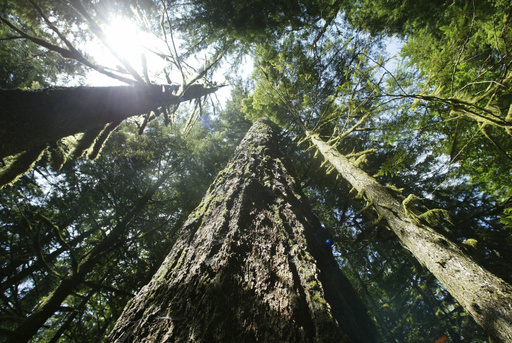
U.S. officials are proposing to allow increased logging on federal lands in the Pacific Northwest, aiming to combat wildfires and support rural economies. This initiative seeks to amend the Northwest Forest Plan, a substantial forest management strategy that has been in effect for over 30 years.
The U.S. Forest Service unveiled this proposal recently, which would transform the governance of nearly 38,000 square miles (99,000 square kilometers) in Oregon, Washington, and California. Established in 1994 during President Bill Clinton’s administration, the plan was a response to the harmful logging practices that led to extensive clearcutting and the destruction of habitats critical to the survival of species like the spotted owl. Consequently, timber harvests fell sharply in the years following the plan’s adoption, igniting political debate.
However, federal officials have emphasized the necessity of proactive forest management to enhance resilience against escalating wildfires linked to climate change. They suggest that increased logging could also provide a steady supply of timber for companies, ultimately aiding rural communities that have faced difficulties due to the decline of lumber mills and forestry jobs.
According to a preliminary environmental assessment, the proposed changes could boost annual timber harvests by at least 33%, with the potential for increases of over 200%. This would consequently lead to a rise in timber-related employment in the region. Historical data shows that timber harvest volumes from the 17 national forests under the Northwest Forest Plan averaged around 445 million board feet yearly over the past decade.
The proposal posits that enhanced logging practices may alleviate wildfire threats while promoting community safety. This would entail allowing logging in areas with trees up to 120 years old, increasing from the current cap of 80 years. By thinning out younger trees, the initiative could create more favorable conditions for the growth of larger, older trees that have better fire resistance.
Additionally, there is a complementary initiative from President Joe Biden’s administration focused on enhancing protections for old-growth trees nationwide. These ancient trees play a vital role in sequestering carbon dioxide, a major contributor to climate change.
Jacque Buchanan, the regional forester for the Forest Service’s Pacific Northwest Region, expressed in a statement that the proposal reflects an evolution in understanding and approach to forest management, adapting to the challenges posed by climate change, such as increasing drought and extreme weather.
The newly proposed plan also emphasizes the importance of collaborating with Native American tribes to leverage their insights and traditional practices in forest management, marking a departure from the exclusion experienced during the formulation of the 1994 plan.
Environmentalists have responded critically to the proposal. The organization Oregon Wild labeled the move “deeply troubling,” particularly given the timing ahead of a potential shift in presidential leadership. John Persell, an attorney for Oregon Wild, voiced concerns that the Forest Service may be pivoting away from the primary goal of the Northwest Forest Plan, which is to safeguard fish, wildlife, and essential old-growth forests.
During the administration of former President Donald Trump, efforts were made to increase logging on millions of acres of West Coast forests, which included rolling back habitat protections for the endangered spotted owl—a decision that faced heavy opposition from ecological experts and was later reversed under President Biden’s administration.
A draft environmental study examined several options, including maintaining the current plan or modifying it to either decrease or increase logging activities. A representative from the timber industry, who co-chaired an advisory committee on the Northwest Forest Plan, stated that the proposed adjustments stem from collaborative discussions involving committee members, the Forest Service, and various stakeholders.
Travis Joseph, president of the American Forest Resource Council, articulated the industry’s desire for a contemporary approach to managing federal forests that adequately addresses wildfire risks, minimizes toxic smoke, actively involves tribal communities, and supports rural workers and their economies.
The release of this proposal marks the commencement of a 120-day public comment period. The environmental review led by the Forest Service is anticipated to be finalized by the following fall, with a conclusive verdict expected in early 2026.
